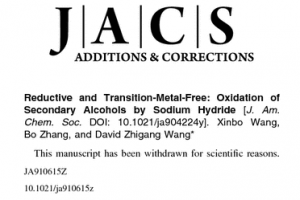The suspense over what objections The Bluebook® A Uniform System of Citation® could have to the publication of Baby Blue’s Manual of Legal Citation, ended with a whimper and not a bang on the publication of Baby Blue’s.
You may recall I have written in favor of Baby Blue’s, sight unseen, Bloggers! Help Defend The Public Domain – Prepare To Host/Repost “Baby Blue”, and, Oxford Legal Citations Free, What About BlueBook?.
Of course, then Baby Blue’s Manual of Legal Citation was published.
I firmly remain of the opinion that legal citations are in the public domain. Moreover, the use of legal citations is the goal of any citation originator so assertion of copyright on the same would be self-defeating, if not insane.
Having said that, Baby Blue’s Manual of Legal Citation is more of a Bleak House “Lite” than a useful re-imagining of legal citation in a modern context.
I don’t expect you to take my word for that judgment so I have prepared mappings from Bluebook® to Baby Blue’s and Baby Blue’s to Bluebook®.
Caveat 1: Baby Blue’s is still subject to revision and may tinker with its table numbering to further demonstrate its “originality” for example, so consider these mappings as provisional and subject to change.
Caveat 2: The mappings are pointers to equivalent subject matter and not strictly equivalent content.
How closely the content of these two publications track each other is best resolved by automated comparison of the two.
As general assistance, pages 68-191 (out of 198) of Baby Blue’s are in substantial accordance with pages 233-305 and 491-523 of the Bluebook®. Foreign citations, covered by pages 307-490 in the Bluebook®, merit a scant two pages, 192-193, in Baby Blue’s.
The substantive content of Baby Blue’s doesn’t begin until page 10 and continues to page 67, with tables beginning on page 68. In terms of non-table content, there is only 57 pages of material for comparison to the Bluebook®. As you can see from the mappings, the ordering of rules has been altered from the Bluebook®, no doubt as a showing of “originality.”
The public does need greater access to primary legal resources but treating the ability to cite Tucker and Celphane (District of Columbia, 1892-1893) [Baby Blue’s page 89] on a par with Federal Reporter [Baby Blue’s page 67], is not a step in that direction.
PS: To explore the issues and possibilities at hand, you will need a copy of the The Bluebook® A Uniform System of Citation®.
Some starter questions:
- What assumptions underlie the rules reported in the Bluebook®?
- How would you measure the impact of changing the rules it reports?
- What technologies drove the its form and organization?
- What modern technologies could alter its form and organization?
- How can modern technologies display content differently that used its citations?
A more specific question could be: Do we need 123 pages of abbreviations (Babyblue), 113 pages of abbreviations (Bluebook®) when software has the capability to display expanded abbreviations to any user? Even if written originally as an abbreviation.
Abbreviations being both a means of restricting access/understanding and partially a limitation of the printed page into which we sought to squeeze as much information as possible.
Should anyone raise the issue of “governance,” with you in regard to the Bluebook®, they are asking for a seat at the citation rule table for themselves, not you. My preference is to turn the table over in favor of modern mechanisms for citations that result in access, not promises of access if you learn a secret code.
PS: I use Bleak House as a pejorative above but it is one of my favorite novels. Bear in mind that I also enjoy reading the Bluebook and the Chicago Manual of Style. 😉
